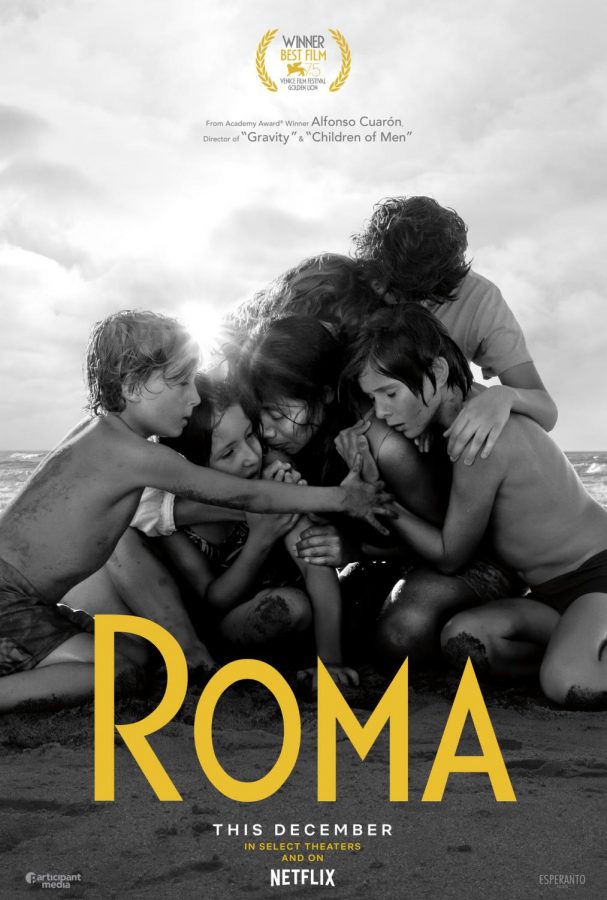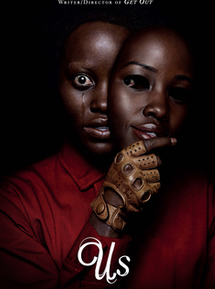Roma: A Meticulous and Meditative Study
Director Alfonso Cuarón’s most recent films, specifically Children of Men and Gravity, can be best described as intense. Each movie, whether focusing on apocalyptic scenarios in the case of the former or being stranded in space in the case of the latter, keeps the viewer glued to the screen. Roma, titled after the middle-class Mexico City neighborhood in which Cuarón grew up, utilizes a much subtler emotional palette than either of those films, choosing to magnify the emotions of the main characters as they deal with their crises while retaining all of the necessary nuances to make the film feel personal. (It is also important to note that the movie is almost entirely in Spanish, with some scenes spoken in the indigenous Mexican language Mixtec or English.)
Taking place in the early 1970s, the movie follows Cleo, a young indigenous woman working as a housekeeper for a white family. She is played by Yalitza Aparicio in her acting debut with incredible nuance. She does virtually everything for the family, which lives in a sprawling two-story home. She wakes up the kids, puts them to sleep, serves food cooked by the family cook, cleans up the feces of the family dog (Borras, who doesn’t get enough affection), does laundry, and seems to have a relationship with the family’s children that rivals that of their own mother. This movie is semi-autobiographical—Cuaron grew up in Roma and is represented by one of the family’s four children—and is dedicated to “Libo,” Cuarón’s maid, upon whom Cleo is based.
The movie opens and spends much of its first hour with scenes establishing Cleo’s everyday life, most of which take place within the family house. Unfortunately, this can be a double-edged sword. While the first half of the movie creates a bond between the audience and main characters while avoiding any awkward exposition, it can also drag on quite a lot at times. However, as the movie develops, it becomes more exciting as a series of catastrophes shake the family and Cleo to their core.
This is where the movie shines. The lengthy exposition pays off; the viewer is emotionally invested in the characters. Every scene by this point carries a weight which keeps the viewer glued to the screen, not unlike the director’s previous two films. Specifically, there is a sequence in this second act of about twenty minutes instigated by the Corpus Christi Massacre that has an emotional intensity unmatched by any other movie I have seen in 2018.
Cuarón makes some overarching creative decisions which give the movie a sense of style and place. The entire movie is in black and white, which feels a little unnecessary but is not wholly unwelcome as it gives the movie an elegant feel, almost declaring that a movie about the life of an indigenous maid such as Cleo deserves the same respect as any old-school movie about a white newspaper magnate or nightclub owner. In addition to this, Cuarón favors long takes, hardly ever cutting to another camera angle except where it is absolutely necessary. The sound design for the movie is amazing, making the audience feel as if they are in the middle of standstill traffic with cars honking all around in one scene, or feeling the waves crashing against their ears as Cleo wades into the ocean in another.
Every detail in this movie serves to make it more personal, leading it to be an incredibly affecting movie and an incredible experience for anyone who has the patience and focus to go on Cleo’s journey. I would highly recommend this movie to anyone who feels they are not easily bored, but if you are looking for a more immediately exciting film, I would suggest watching (or rewatching) Cuarón’s previous films Gravity and Children of Men. (Roma is in select theaters now and starts streaming on Netflix on December 14th.)






